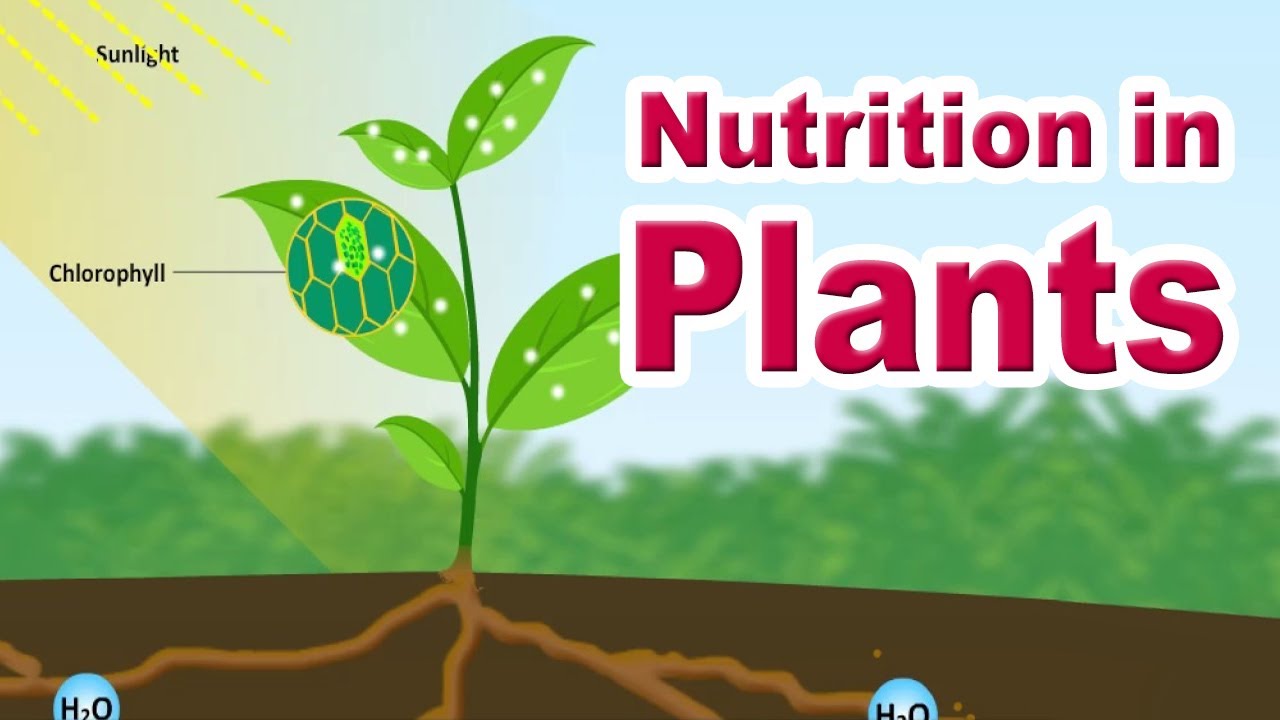
About Lesson
1.1 Mode of Nutrition in Plants
-
Nutrition and Its Importance:
-
Nutrition is how living organisms get their food and use it for energy, growth, and repairing their bodies. For example, humans eat food to get energy to play and study, and to grow taller and stronger.
-
-
Types of Nutrition:
-
Autotrophic Nutrition: Plants make their own food using simple substances like water, carbon dioxide, and minerals. This process is called autotrophic nutrition. The word “auto” means “self” and “trophic” means “nourishment”. Plants are known as autotrophs.
-
Example: Green plants like mango trees, grass, and roses make their own food through photosynthesis.
-
-
Heterotrophic Nutrition: Animals and humans cannot make their own food. They depend on plants or other animals for food. This type of nutrition is called heterotrophic nutrition. The word “hetero” means “other”.
-
Example: Humans eat vegetables, fruits, and meat. Animals like cows eat grass, and lions eat other animals.
-
-
1.2 Photosynthesis — Food Making Process in Plants
-
What is Photosynthesis?:
-
Photosynthesis is the process by which green plants make their own food using sunlight, water, and carbon dioxide. This process happens mainly in the leaves of plants.
-
-
Food Factories in Plants:
-
The leaves are often called the “food factories” of plants because they are the main site where photosynthesis occurs. They contain a green pigment called chlorophyll which captures sunlight.
-
Example: When you look at a leaf, the green color you see is due to chlorophyll.
-
-
-
Raw Materials for Photosynthesis:
-
Sunlight: Captured by chlorophyll in the leaves.
-
Water: Absorbed by the roots from the soil and transported to the leaves through vessels.
-
Carbon Dioxide: Taken in from the air through tiny pores in the leaves called stomata.
-
Chlorophyll: The green pigment in leaves that helps capture sunlight.
-
-
Process of Photosynthesis:
-
Sunlight + Water + Carbon Dioxide → Glucose (a type of sugar) + Oxygen
-
The energy from sunlight is used to combine carbon dioxide and water to make glucose. Oxygen is released as a byproduct.
-
Example: The air we breathe contains oxygen released by plants during photosynthesis.
-
-
-
Importance of Photosynthesis:
-
Photosynthesis is crucial for life on Earth. It produces food for plants and releases oxygen, which all living beings need to breathe.
-
Example: Without photosynthesis, there would be no oxygen for humans and animals to breathe, and no food for herbivores to eat, which in turn affects the entire food chain.
-
-
-
1.3 Other Modes of Nutrition in Plants
-
Non-Green Plants:
-
Some plants do not have chlorophyll and cannot perform photosynthesis. They rely on other sources for their nutrition.
-
Example: Cuscuta (Amarbel) is a yellow, slender, and branched plant that wraps around other plants and takes their nutrients. It’s known as a parasite.
-
-
-
Parasitic Plants:
-
Parasitic plants obtain nutrients from other living plants (hosts). They harm the host plant by taking its nutrients.
-
Example: Mistletoe is another example of a parasitic plant.
-
-
-
Insectivorous Plants:
-
Some plants, like the pitcher plant and Venus flytrap, capture and digest insects to fulfill their nutritional needs.
-
Example: The pitcher plant has a modified leaf that forms a pitcher-like structure to trap insects. The insects are then digested to provide nutrients to the plant.
-
-
-
Saprotrophic Nutrition:
-
Plants like fungi (mushrooms) obtain nutrients from dead and decaying matter. They secrete digestive juices on the matter, breaking it down and then absorbing the nutrients.
-
Example: Mushrooms growing on decaying logs or leaf litter in a forest.
-
-
-
1.4 Saprotrophs
-
What are Saprotrophs?:
-
Saprotrophs are organisms that feed on dead and decaying organic matter. They play a crucial role in the ecosystem by breaking down complex organic materials into simpler substances.
-
-
Fungi:
-
Fungi like mushrooms, molds, and yeast are common saprotrophs. They release enzymes to decompose dead matter and absorb the nutrients.
-
Example: Bread mold that grows on stale bread is a type of fungus.
-
-
-
Importance of Saprotrophs:
-
They help recycle nutrients in the ecosystem, making them available for other plants and organisms.
-
Example: Without saprotrophs, dead plants and animals would accumulate, and the nutrients locked in them would not be released back into the soil.
-
-
1.5 How Nutrients are Replenished in the Soil
-
Nutrient Depletion:
-
As plants grow, they absorb minerals and nutrients from the soil. Over time, these nutrients get depleted, making the soil less fertile.
-
-
Replenishing Nutrients:
-
Fertilizers and Manures: Farmers and gardeners add fertilizers (chemical) and manures (organic) to the soil to replenish essential nutrients like nitrogen, phosphorus, and potassium.
-
Example: Compost made from kitchen scraps and garden waste is a type of manure.
-
-
-
Nitrogen Fixation:
-
Certain bacteria in the soil convert atmospheric nitrogen into a form that plants can use. These bacteria often live in the root nodules of leguminous plants (like peas and beans).
-
Example: Rhizobium bacteria live in the roots of legumes and help in fixing nitrogen, enriching the soil.
-
-
-
Symbiotic Relationships:
-
In symbiotic relationships, different organisms live together and benefit from each other. For example, Rhizobium bacteria get food and shelter from the leguminous plants, and in return, they provide the plants with usable nitrogen.
-
Example: Lichens are a symbiotic relationship between a fungus and an alga. The alga provides food through photosynthesis, and the fungus provides water and minerals.
-
-
-
Join the conversation
